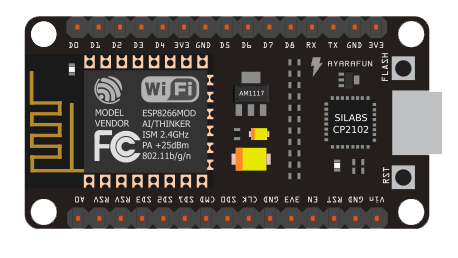Controlling a Water Pump with WeMos D1 Mini
I recently bought a mini Arduino water pump that runs on 3 to 6 V Since it consumes very little current (130 mA @ 3V according to its specs), it seems perfect to be used for small...
I recently bought a mini Arduino water pump that runs on 3 to 6 V Since it consumes very little current (130 mA @ 3V according to its specs), it seems perfect to be used for small...
Now that you've set up your WeMos D1 Mini to be programmable using the Arduino IDE, it's time to build a project I'm a huge believer in active learning and project-making does...
SPIFFS or Serial Peripheral Interface Flash File System is a system that utilizes extra flash memory on the ESP8266 and ESP32 for storing files It’s so named because the user...
In this article, I will guide you to the steps on how to build a WiFi servo controller project using the WeMos D1 Mini ESP8266 breakout board ...
In the previous tutorial, we set up a soil moisture sensor and have its data readable via WiFi However, that data is only accessible if the NodeMCU ESP8266 and the client...
Plants need enough water to survive But what if you forgot to water the plants This multi-part ESP8266 tutorial aims to provide a simple soil moisture sensor that reminds you, via...
Relays in electronics are useful for controlling a high-power load using a smaller-power circuit For example, an Arduino or PIC running on 5V, controlling a 240VAC light bulb,...
Last time, I featured the 096” OLED display and how to use with an Arduino microcontroller If that screen was too small, you can try upgrading to a slightly larger 13” display...
The WeMos D1 Mini is part of the WeMos D1 family of development boards that feature the popular ESP8266 WiFi chip If you have just purchased this board, then you’re on the right...
The DHT22 is a temperature and humidity sensor in one package It is widely used mainly due to its price but also because of it being robust and user-friendly In this NodeMCU...
